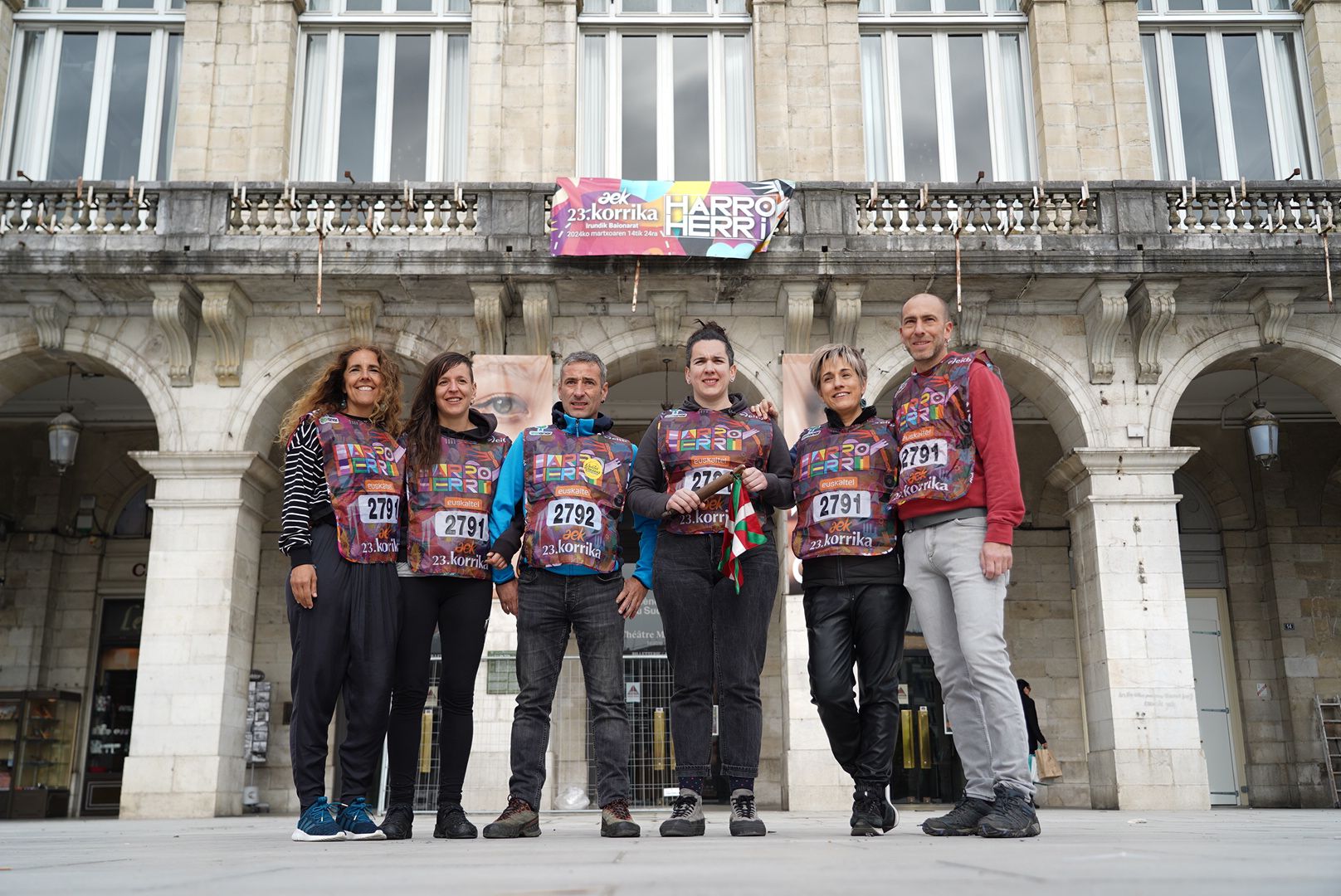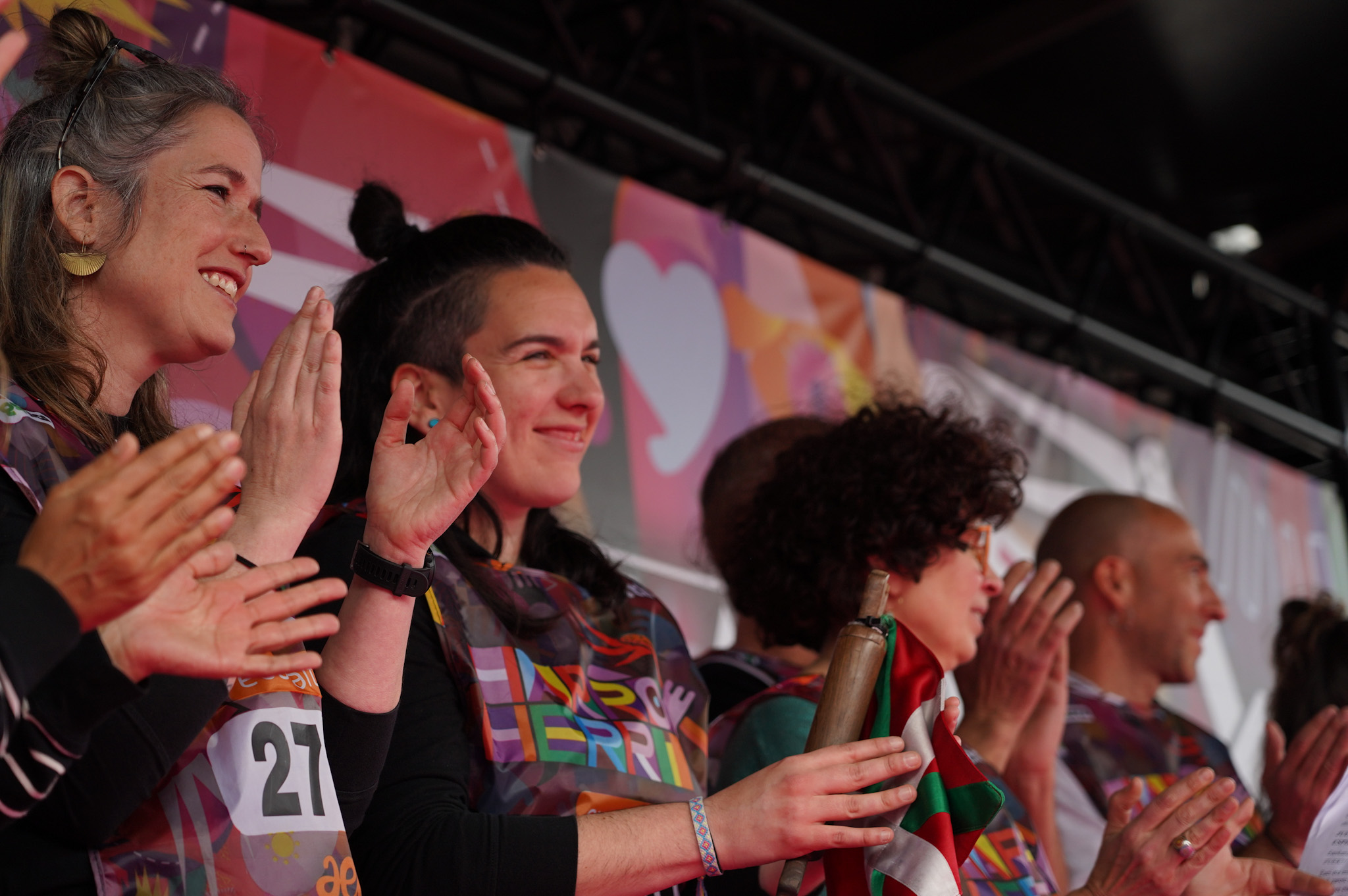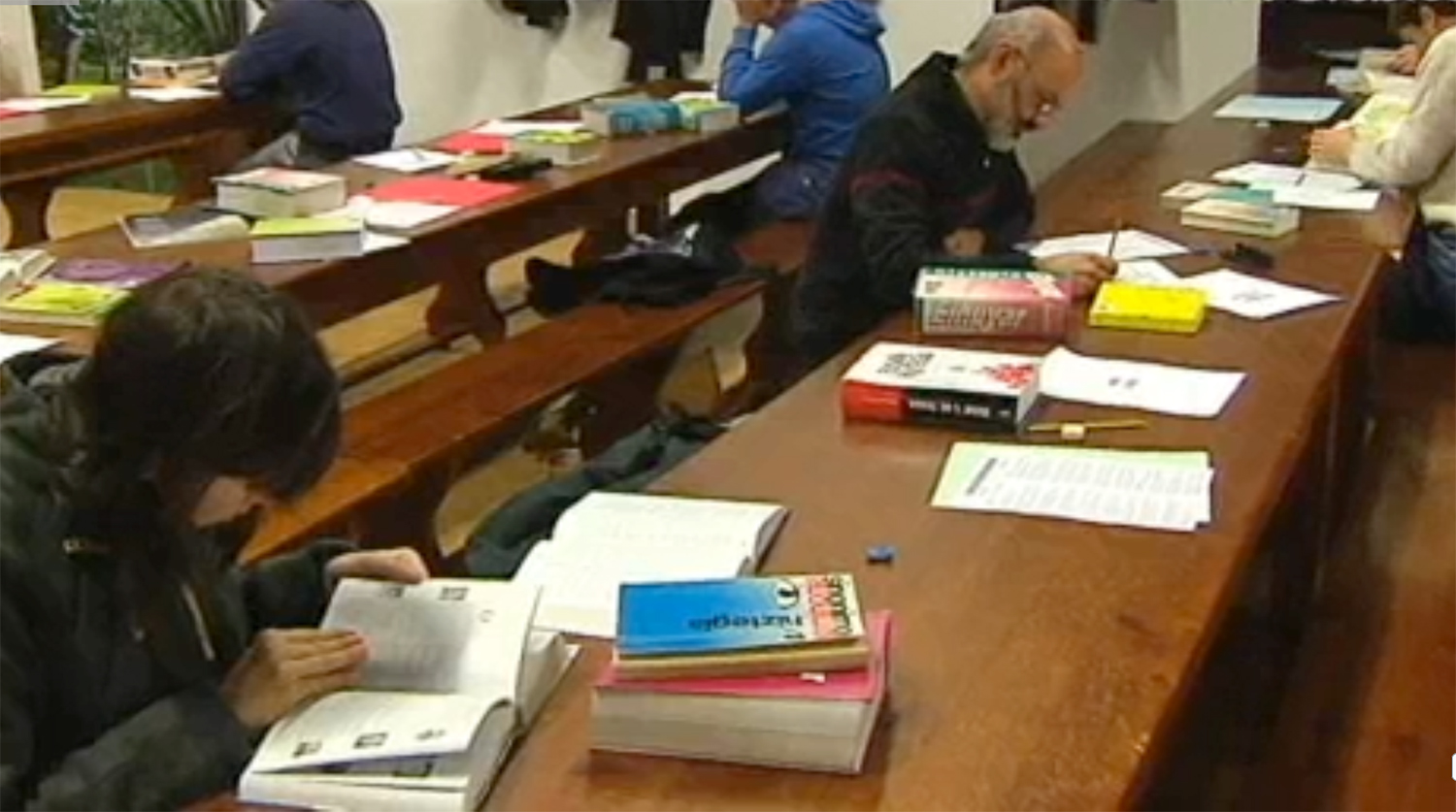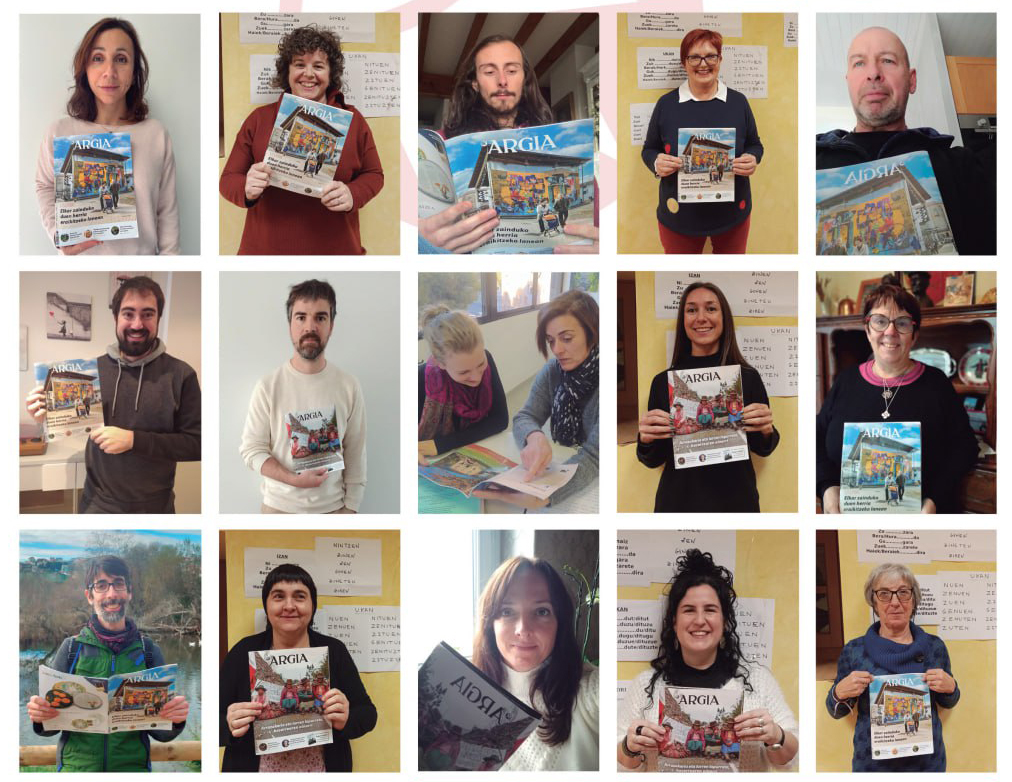Journals of Basque students 40 years old
- On the occasion of the anniversary, the AEK magazine for the Basque student has renewed its design and website. Among the innovations is, for example, the possibility of a digital subscription of Oiga!. With the presence for the first time at the Durango Fair, Landako Gunea will continue to celebrate its 40th anniversary.
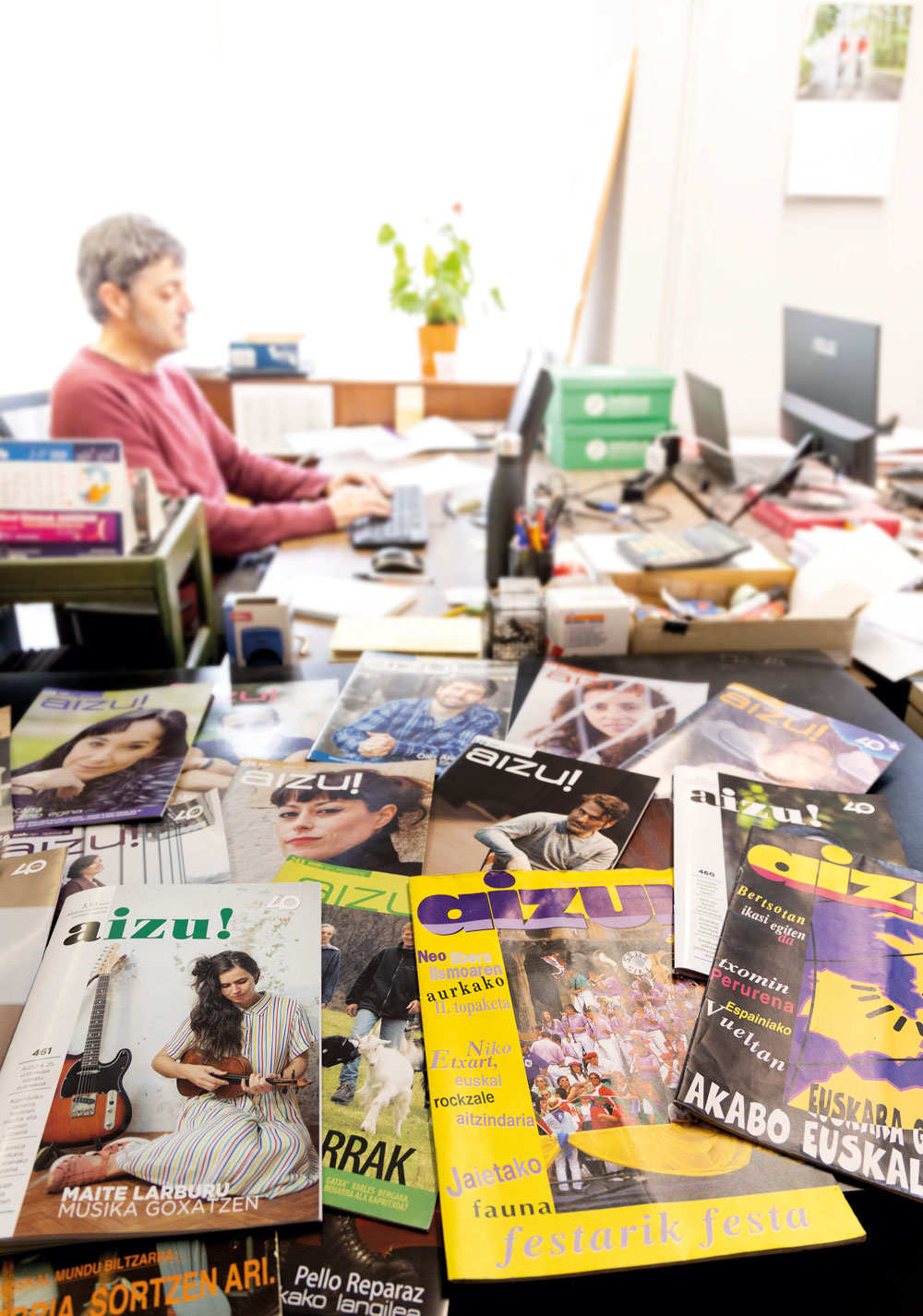
It was founded in 1981. 40 years. The number, in this case, is not simply biblical, but a demonstration and a demonstration of the truth. This year she turns 40. Hey! by AEK the monthly magazine edited by the Coordinator of Literacy and Euskaldunization for people who are learning Euskera. In addition to the magazine on paper, the Aizu! website has also been renovated. As reported to us by the journal's coordinator, Eñaut Mitxelena, in these 40 years the journal has undergone several reforms, the changes have always had the benefit of the reader and the current adaptations have the same objective.
The reform has been carried out in Aupa! October 2021, in the words of Mitxelena: “The main changes are related to appearance. For the journal to be more readable, it now has a lighter and clearer design. For this, among other things, the image has become more important.” As for the substance, the main sections of the journal have been adapted and new ones have been created. “The new sections are aimed, above all, at Euskera students of lower levels and, for example, each month readers will be offered a series of brief and agile questions through the “Idazlea” storylines of the cultural pages and the “Musikaria mintzo mintzo” sections. If it is to be said that the writer Xabier Etxaniz Rojo and Maite Arroitajauregi Mursego have released the two previous chapters. “As far as content is concerned, we will continue to work on the usual issues, that is, culture, society, sport, Basque, curiosities...”. These contents are always adapted to people who are learning Euskera, “while learning Euskera, opening paths to know the Basque culture”, said the journal’s coordinator, Mitxelena.
However, as indicated above, design is not the only change that the AEK magazine has launched, but it has also renewed the website aizu.eus. The word is Mitxelena's: “So far aizu.eus has been a main sample of the magazine on paper, but from now on it will be complementary to paper and digital. Many paper content will remain intact on the network, while others will only be available to subscribers.” And, for example, Listen! will offer new types of subscriptions, i.e. in addition to ordinary paper subscription, which combines digital, digital and paper subscription. As usual, through the digital subscription, the reader will receive the monthly number by e-mail in pdf format. In addition, the author of the alleged digital subscription will also have at his disposal the old numbers of Hey!.
1981, creation
On the other hand, those responsible for the journal have wanted to take advantage of the anniversary to make a retrospective and the truth is that M is a golden perlar. The 40 years that Egimen has matured these months in the pages of Hey! in the chronicle of the process. Erramun Mendibelanda appears at the beginning of the journal's history.
It's 1981. Mendibelanda brings to the plaza the name of the late Alberto Ugarte. “He studied Basque Philology at the University of Deusto. He was also a professor of Euskera at the local Basque Cultural Seminar. He brought together a number of people, also from Fine Arts, and he launched the intention of the journal.” Alberto Ugarte, Erramun Mendibelanda, Jabi Ubierna… Among many they made the journal and among many they also decided the name. Hello! Listen, they were inspired by the name of the magazine! When you guess the name.
They decided on the themes, considered that articles had to be chosen… “we collected and decided on their extension and type letter. We'd fill in patches and we'd go to the printing press. Ever by taxi!” remembers Mendibelanda and Ubierna. There are other anecdotes: “Once the robbers came to us, the municipal police came, and they saw that disorder and they believed it was a chaos caused by the robbers, ha!”
The first issue of the magazine had a year of work and had to sell the help bonds to carry out the idea.
1983, accession to AEK
Listen! Two years after its creation, the journal took an important step, coinciding with AEK. M. As we have read in the chronicle that Egimendi has guided in the pages of the magazine, at that time Hey! And AEK shared headquarters, they knew each other. The journal's seasonal coordinator, Iber Otsoarena, is in charge of testifying: “It was time to publish the magazine when it was a year and a half, it was time to make a shy, Hey! It asked for dedication, but for that we needed readers and subscribers.” & '97; Joseba Kanpo, of the leaders of AEK &' 97; Listen! Euskera was considered a useful tool for the student and convinced the coordinator's didactic team. Alberto Gabikagojeaskoa and Josu Naberan, among others, coincided the magazine and AEK.
However, convinced by the didactic group, there were also doubts at the higher level. The final decision had to be made by the AEK National Commission and, according to Lobo, they hardly managed to convince the Algerian and Gipuzkoan leaders that “they believed that the coordinator should meet with Hey! It was just about the bilbaínos." On the other hand, there were also many concerns in the magazine, which had to do with whether the publication was going to get them out of hand. As Urtsa Errasti, a member of AEK of Joseba Out, remembers, “we [AEK] had no intention of entering Hey! accounts, nor in monetary matters. In addition, Josu Naberan and Gabika [Alberto Gabikagojeaskoa] of the didactic group considered that the journal had a very adequate resource to use in barnetegis and literacy groups. They knew very clearly that a journal of this kind was needed to help in the teaching of Euskera.” Thus, AEK offered its Euskaltegis network. Despite the weak structure of the coordinator, the merger greatly strengthened the journal. In November 1983, for the first time, Hey! introduced the AEK logo into the skin.
Fortnightly
After the December 1994 issue, Listen! was not dismissed in January siguiente.Sin but returned to fortnight in February 1995, thus remaining so until the summer of 1999. The AEK General Assembly decided to revolutionize the journal and changed its image and frequency. M. Following the history of Egimendi magazine, “on February 1, 1995 the issue 141 was published”, the first of the fifteenth.
The change was evident, very evident: “The format of the magazine, the stroller, the disappearance of the toucan [Hey's pet! ], recycled paper...” The publication of two issues a month necessarily increased the network of collaborators, since the journal's guides also invented new sections.
At its fifteenth edition, it celebrated its fifteenth anniversary. Issue 181 brought a cheerful, colourful skin, and the magazine brought to the 1995 Durango Book and Record Fair two new products: Dostose! The game collection and Hey, Paddy! Storybook. As for the first, Dostose was going to play four games to work on oral expression, learn the vocabulary and enrich the cultural level of the players. As for the second, Paddy Rekalde was a compilation of the narrations that the writer had published in Hey!. Both received an excellent welcome, as both works were exhausted.
Listen! It lasted twelve years. From then on, in November 1999, it began to be published again on a monthly basis, renewing a task force that seemed sufficient.
AEK student, subscriber of Hey!
That same year, we are already in 1999, the AEK General Assembly decided that all the students of the Euskaltegis in charge, Hey! subscription of the magazine when making the tuition to learn Basque. There were others: “Among other things, not only the members who were going to work in the fixed group, but also the collaborators began to collect for their work, unlike the ones they had until then.” Ana Unanue, coordinator and journalist of the magazine, and Joseba Beramendi Exprai, designer and designer. M. According to Egimendi, “they both designed the new journal. The principal office of the magazine was transferred from Bilbao to Pamplona, where journalists were installed in different places: Ana Unanue, in Pamplona; Iñigo Gago, in Bilbao; Franck Dolosor, in Baiona”. To help them, they had two people: Gotzon Hermosilla, Head of the AEK Communication Office at the time and Mikel Aldasoro, Head of AEK of Navarra.
As Exprai remembers, “Listen! we calculated how many modules could be included to be profitable and how many should be sold, always keeping a balanced proportion between content and advertising.” Ana Unanue recalls that the management of the economy was not in her hands. They had fixed customers, AEK Euskaltegis students, and they didn't have to pay for direct selling. “We made the nicest part: the magazine itself. We were free to do what we wanted and enjoyed.” In this, Exprai joins Unanue.
22 years
Listen! He founded his great career from the students. As can be seen, it has undergone fourteen changes along the way and now, in the number corresponding to September of this year 2021, it has been reformed. In this case, as we have advanced above, the change is mixed, as it has renewed the journal in paper format and the www.aizu.eus portal.
However, before its 40th anniversary, the magazine celebrated its 25th anniversary in 2007. It is worth saying that, then, the heads of the magazine created a travelling exhibition on the history of the fourth century of Hey! and published a special issue in December 2006: Listen! 25 years after his presentation at the Durango Fair. This special issue, on the other hand, was fatter than usual, as 44 more pages were added to the 42 regular pages, to the rise of the workers who, over the years, respected the journal. In this special issue, Hey! collected 25 covers, events, interviews, AEKomeria, comics, announcements, books and authors published in history.
On the occasion of its anniversary, the 2007 ARGIA Prize, “at a time when the Basque press was in crisis, the creation and revitalization of a new magazine had to be very clear about the objective of promoting the teaching of Euskera and offering adults who were learning Euskera a new medium of communication made to their measure”.
Fifteen years have passed and now Hey! It has the number 40. The new journals and websites have been published, and the December issue will be special, as we will see in the Durango Fair: “40 years and 462 numbers are not wasted.” It must not be left silent either: Listen! 40 years.
Direct delivery
“We once went to Buñuel to interview Eneko Landaburu, who was where he had the rest house. We were taking the radio cassette from the house, a great magnetophon, in fact, to record our work. The camera was handed over by someone. Father's car. He ended the interview with Landaburu and invited us to visit a woman who was giving birth in the same house. There we were Esther Zarandona and I [Iber Otsoa]. It was exciting, very nice, we got excited from there” (M. Collected from Egimendi chronicle).
'Comic book!'
Inevitably, images are of great importance in any journal. In the beginnings of Oiga!, in general, in addition to the usual drawings and illustrations, the comic strip occupied a prominent place between 1988 and 1999, Komikele! The magazine published it. Many of these comics were published without the name of their authors. The testimony is from the cartoonist Pernan Goñi Olalde, who worked in Hala! de Garai: “I was poorly seen the mastery of the image, wanting to complete the resume… I was in favor of signing to take responsibility for the work, whether the [comic book] was bad or good. If it's OK, why not publicly acknowledge that merit as much as that of musicians or writers? We had similar debates.” However, although the comics had no signature, they have managed to know that the following illustrators published a work in Komikaizu! : Jabi Ubierna, Mikel Mardones, German Maiz, Ion Arretxe, Alberto Uribarri, several members of the journal Napartheid, Rober Garay, Luis Duran, Ion Iñaki Artetxe, Pedro Rivero, Erramun Mendibelanda, Asier Esnaola… and two women: Bea Anitua and Olga Zulueta.
It is not Christmas, however, there will soon be decorations in the big shops to announce it, or at least they say so. In the shop window “Zorionak! Claims like “Gabon ederra passes!” will be exposed everywhere. However, congratulations can be many: the lottery, bringing a... [+]
Badira sei-zazpi urte kartzelan dauden presoek euskara ikasteko duten eskubidea bermatzeko helburuarekin, lanean aritu den euskara-irakasleen sare bat: Presoen Euskara Irakasleen Taldea.














